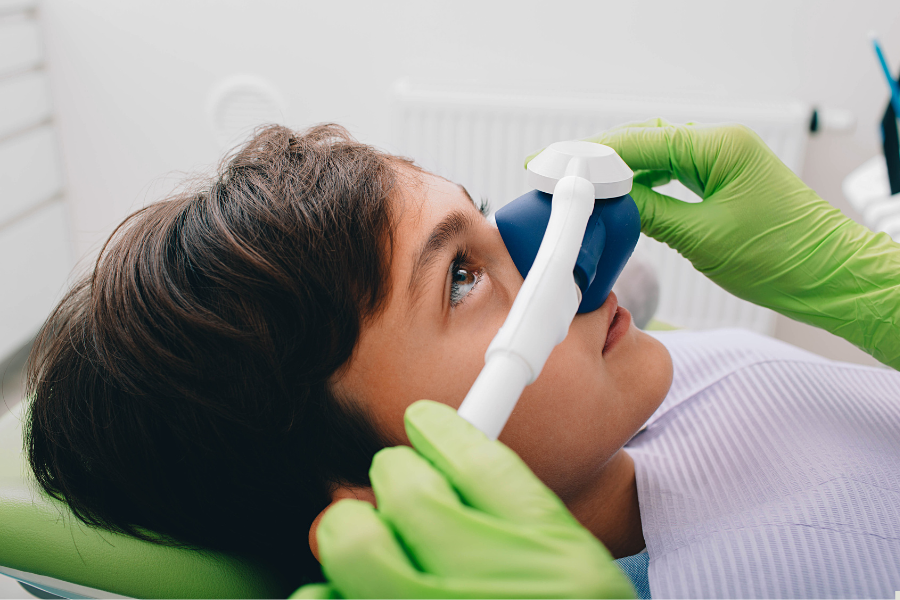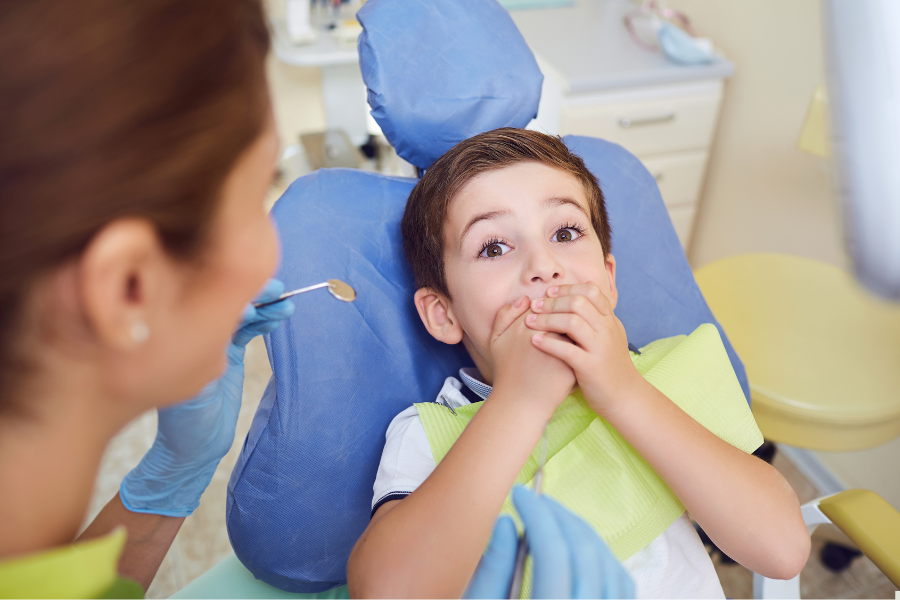When it comes to dental care for children, it’s important to find an Edmonton pediatric dentist who understands the unique needs of young patients.
Visiting the dentist can be a nerve-wracking experience for children. Sedation dentistry is a valuable option that many parents consider to help their children remain calm and comfortable during dental procedures, such as extractions.
This approach not only helps children relax but also assures parents that their children are in safe hands.
Let’s take a look at the different sedation options for children, which one is the safest, and how to prepare your child for sedation during dental procedures:
Is Sedation Dentistry Safe for Kids?
It’s understandable that sedation dentistry is a topic of concern for many parents. However, understanding the general safety concerns can help alleviate some of the worries.
General Safety Concerns
One of the main concerns parents have is the potential for adverse reactions to sedation. While sedation risks can vary, it is important to note that serious complications are rare.
Pediatric dentists are specially trained to administer sedation safely and effectively so that the benefits outweigh the potential risks.
How Dentists Minimize Risks
Pediatric dentists specialize in creating a safe environment for administrating sedation. They use precise doses adjusted for the child’s weight and age and continuously monitor vital signs during the procedure.
Guidelines and Regulations
Dental professionals follow strict guidelines and regulatory standards that dictate the safe use of sedation in pediatric dentistry. These standards help manage the type, dosage, and administration methods of sedation.
Are Pediatric Dentists Qualified to Administer Sedation?
Pediatric dentists undergo extensive training that specifically focuses on the safest and most effective sedation techniques for children.
During their education, pediatric dentists complete additional specialized training beyond dental school. This gives them the education and experience to perform dental procedures on children and administer sedation.
The exception is general anesthesia, which is administered by an anesthesiologist or a specially trained dentist.
Pediatric dental offices are also equipped with the necessary tools and staff trained to monitor sedated patients, creating a controlled and safe environment.
Types of Sedation Used in Pediatric Dentistry
When it comes to pediatric dentistry, there are different sedation options that help children remain calm and comfortable during dental procedures.
Each type has its specific usage and recovery process:
Nitrous Oxide (Laughing Gas)
Nitrous oxide, often referred to as laughing gas, is a mild sedative that is widely used in pediatric dentistry. It’s considered one of the safest sedation methods for children.
It is administered through a mask that fits over the nose, and it helps children relax without inducing sleep. The gas is mixed with oxygen and inhaled during the dental procedure, and the dentist can adjust the sedation levels as needed.
Recovery from nitrous oxide is quick, and the effects wear off shortly after the mask is removed. Children can resume their normal activities almost immediately after the procedure.
Oral Sedation
Oral sedation involves having the child take a sedative orally before the procedure. This method is safe when administered under the guidance of a qualified dentist.
These sedatives can help children relax and can be useful for longer procedures.
The effects of oral sedation last longer than laughing gas, and children might feel drowsy for a few hours after the procedure.
Intravenous (IV) Sedation
IV sedation provides a deeper level of sedation by administering the sedative directly into the bloodstream. This type of sedation is performed by specially trained dental professionals.
It is suitable for more intensive procedures. Recovery from IV sedation can take longer, and children may remain groggy or sleepy for several hours.
General Anesthesia
General anesthesia is used for the most extensive dental procedures, where the child needs to be completely asleep. It’s administered by an anesthesiologist and requires a pre-procedure assessment.
Recovery from anesthesia takes more time, and children often need several hours to wake up fully.
What is the Safest Form of Sedation for Children?

Nitrous oxide is considered to be the safest form of sedation for children. Its mild sedative effects can be easily controlled and quickly reversed.
Its rapid onset and the ability to quickly clear from the body once inhaled mean that children recover almost immediately after the mask is removed.
There are no lingering effects, and the fast recovery minimizes stress and anxiety for both the child and the parents.
Other forms of sedation, like IV sedation and general anesthesia, require longer recovery times, and children may not be open to swallowing a pill when it comes to oral sedation.
At What Age Would a Child Require Sedation?
The need for sedation in pediatric dentistry is not strictly age-dependent. It’s based on the child’s anxiety levels, the complexity of the procedure, and the child’s ability to cooperate.
However, it is more commonly used in younger children who may have difficulty sitting still.
When it comes to a minimum age, nitrous oxide can be used safely for children as young as three years old, provided they can comfortably wear a mask over their nose.
How to Prepare Your Child for Sedation
Preparing your child for a sedation dental procedure will help create a less stressful situation and help your child feel more comfortable about the upcoming visit.
Educate Your Child
Help your child understand what sedation is by reading books or watching videos about dental visits. If they are going to be sedated using nitrous oxide, show pictures of the mask and explain that it doesn’t hurt to wear.
Talk About What Happens
Discuss the sedation process and how sedation will help them feel relaxed without any pain. Reassure them that you will be there with them before they start and during the procedure.
Meet With the Dentist
Have your child meet the dentist before the procedure to help familiarize your child with the dental office and staff. This will help build trust and comfort. Plus, it’s a great opportunity for your child to ask the dentist questions or to see the equipment that will be used in person.
Follow Pre-Sedation Instructions
Follow all pre-sedation instructions given to you by the pediatric dentist. This might include not eating or drinking before the procedure. Make sure your child is dressed in comfortable clothes, and consider bringing a favorite blanket or toy to provide additional comfort.
Plan for Post-Procedure Care
Plan to spend the day with your child after their dental procedure. Create a comfortable rest area at home where your child can relax and recover. Have soft foods and soothing drinks ready to help them gently transition back to their usual activities.
Choosing the Right Edmonton Pediatric Dentist for Your Child’s Sedation Needs
Understanding the different sedation options for your child can help you make informed decisions about your little one’s dental care.
If you’re looking for a compassionate and skilled Edmonton pediatric dentist who specializes in sedation dentistry, get in touch with Oxford Dental.
We can help make your child’s dental experience as peaceful and pain-free as possible.
Book an appointment today to discuss the best sedation options for your child’s comfort and care.

